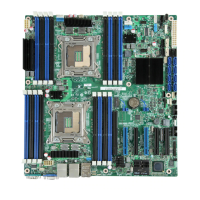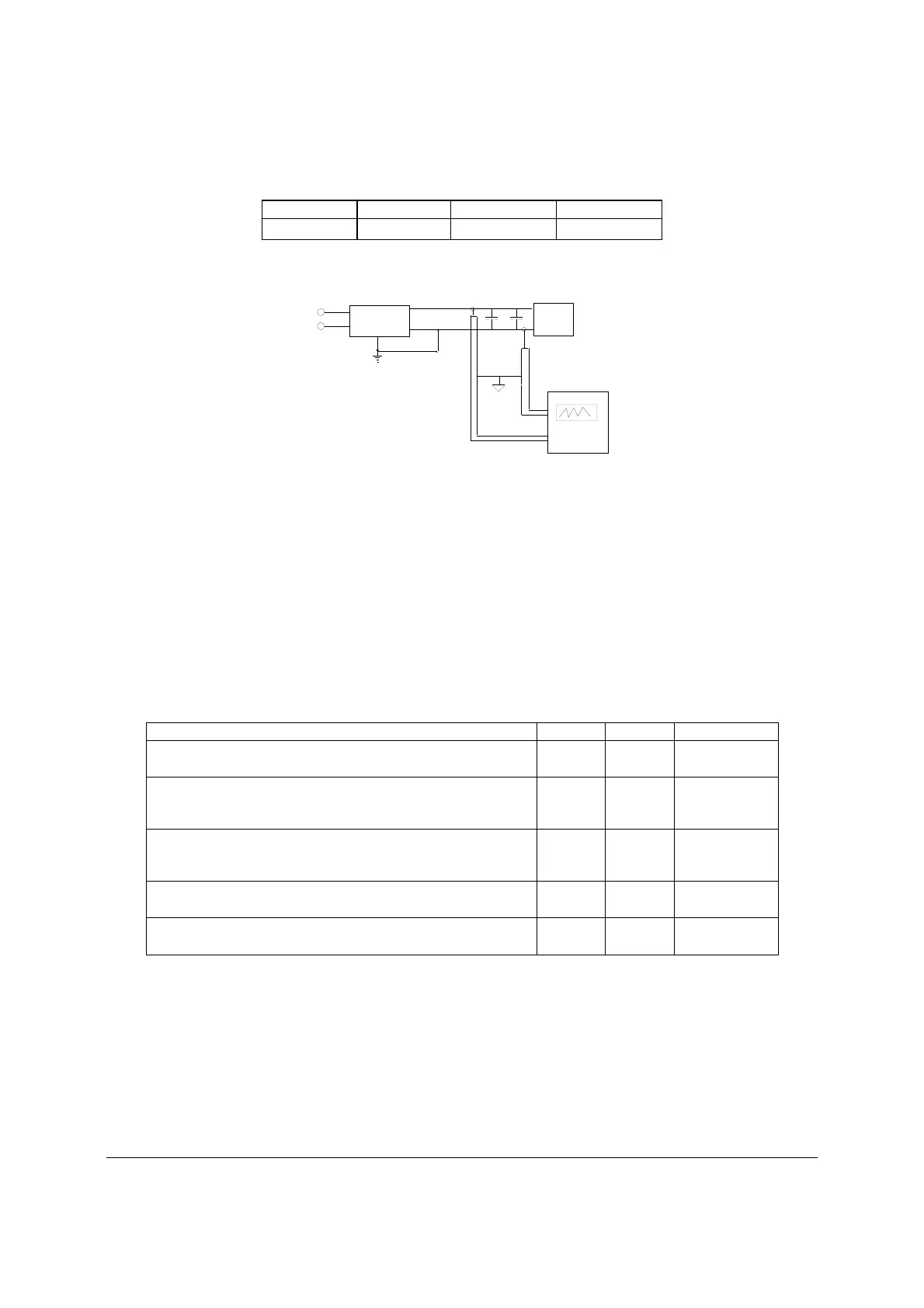Intel
®
Server System P4000CP Power System Options Intel
®
Server Board S2600CP and Server System P4000CP TPS
Revision 1.1
Intel order number G26942-003
158
Table 129. Ripple and Noise
+3.3V +5V -12V +5VSB
50mVp-p 50mVp-p 120mVp-p 50mVp-p
The test set-up shall be as shown below.
AC HOT
POWER SUPPLY
AC NEUTRAL
V
OUT
RETURN
V
AC GROUND
LOAD
SCOPE
LOAD MUST BE
ISOLATED FROM
THE GROUND OF
THE POWER
SUPPLY
10uF
.1uF
GENERAL NOTES:
1. LOAD THE OUTPUT WITH ITS MINIMUM
LOAD CURRENT.
2. CONNECT THE PROBES AS SHOWN.
3. REPEAT THE MEASUREMENTS WITH THE
MAXIMUM LOAD ON THE OUTPUT.
SCOPE NOTE:
USE A TEKTRONIX 7834 OSCILLOSCOPE WITH 7A13 AND
DIFFERENTIAL PROBE P6055 OR EQUIVALENT.
Note:
When performing this test, the probe clips and capacitors should be located close to the load.
Figure 63. Differential Noise test setup
13.4.2.15 Timing Requirements
Below are timing requirements for the power on/off of the PDB DC/DC converters. The +3.3V,
+5V and +12V output voltages should start to rise approximately at the same time. All outputs
must rise monotonically.
Table 130. Output Voltage Timing
Description Min Max Units
Output voltage rise time for each main output; 3.3V, 5V, -12V
and 5Vstby.
1.0 20 msec
The main DC/DC converters (3.3V, 5V, -12V) shall be in
regulation limits within this time after the 12V input has
reached 11.4V.
20 msec
The main DC/DC converters (3.3V, 5V, -12V) must drop
below regulation limits within this time after the 12V input has
dropped below 11.4V.
20 msec
The 5Vstby converter shall be in regulation limits within this
time after the 12Vstby has reach 11.4V.
20 msec
The 5Vstby converter must power off within this time after the
12Vstby input has dropped below 11.4V.
20 msec
13.4.2.16 Residual Voltage Immunity in Standby Mode
Each DC/DC converter is immune to any residual voltage placed on its respective output
(typically a leakage voltage through the system from standby output) up to 500mV. This residual
voltage does not have any adverse effect on each DC/DC converter, such as: no additional
power dissipation or over-stressing/over-heating any internal components or adversely affecting
the turn-on performance (no protection circuits tripping during turn on).

